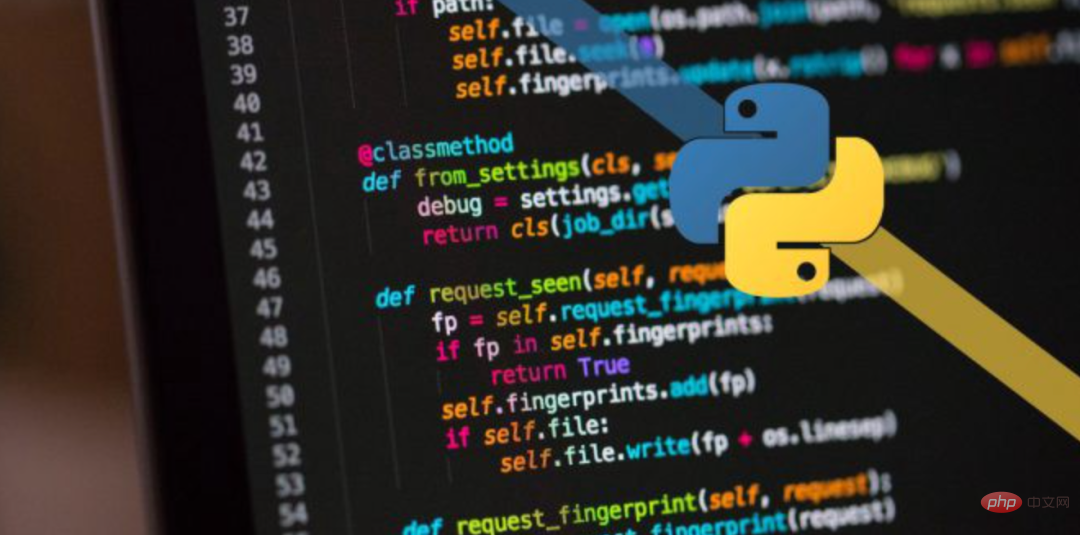

Si vous souhaitez exécuter périodiquement un script Python sur un serveur Linux, le choix le plus connu devrait être le script Crontab, mais Crontab présente les défauts suivants :
<code style="font-family: monospace; font-size: inherit; background-color: rgba(0, 0, 0, 0.06); padding: 0px 2px; border-radius: 6px; line-height: inherit; overflow-wrap: break-word; text-indent: 0px;"><strong>1.不方便执行<strong>秒级的任务</strong>。</strong>
<strong>2.当需要执行的定时任务有上百个的时候,Crontab的<strong>管理就会特别不方便</strong>。</strong>
另外一个选择是 Celery,但是 Celery 的配置比较麻烦,如果你只是需要一个轻量级的调度工具,Celery 不会是一个好选择。
在你想要使用一个轻量级的任务调度工具,而且希望它尽量简单、容易使用、不需要外部依赖,最好能够容纳 Crontab 的所有基本功能,那么 Schedule 模块是你的不二之选。
使用它来调度任务可能只需要几行代码,感受一下:
# Python 实用宝典
import schedule
import time
def job():
print("I'm working...")
schedule.every(10).minutes.do(job)
while True:
schedule.run_pending()
time.sleep(1)
上面的代码表示每10分钟执行一次 job 函数,非常简单方便。你只需要引入 schedule 模块,通过调用 <strong>scedule.every(时间数).时间类型.do(job)</strong> 发布周期任务。
发布后的周期任务需要用 <strong>run_pending</strong> 函数来检测是否执行,因此需要一个 <strong>While</strong>1. Il n'est pas pratique d'effectuer des tâches de deuxième niveau.
<strong>2. Lorsqu'il y a des centaines de tâches planifiées qui doivent être exécutées, la gestion </strong> de Crontab sera particulièrement gênant</em>. </span>
Celery est une autre option, mais la configuration de Celery est plus compliquée. Si vous avez juste besoin d'un outil de planification léger, Celery ne sera pas un bon choix.
Si vous souhaitez utiliser un outil de planification de tâches léger et espérez qu'il soit aussi simple et facile à utiliser que possible sans dépendances externes, et qu'il puisse de préférence prendre en charge toutes les fonctions de base de Crontab, alors le module Planification est votre meilleur choix.
L'utiliser pour planifier des tâches peut ne nécessiter que quelques lignes de code, ressentez-le :pip install schedule
<span style="color: #666666;">scedule.every(time number).time type.do(job)</span></ code ></p><p ><span style="font-size: 18px;"> Publier des tâches périodiques. <em><strong>Les tâches périodiques après la sortie doivent utiliser </strong></em> </span><code style="font-family: monospace; font-size: Heherit; background-color: rgba(0, 0, 0, 0.06); padding: 0px 2px; border-radius : 6px ; line-height : hériter ; overflow-wrap : break-word ; text-indent : 0px;"></p>run_ending<p >
fonction pour détecter s'il faut exécuter, donc a
<strong>While</strong>
Ce qui suit parlera de l'installation et de l'utilisation de base et avancée du module Schedule.
1. Préparation
Veuillez choisir l'une des méthodes suivantes pour saisir la commande pour installer les dépendances :
1. Environnement Windows Ouvrez Cmd (Démarrer-Exécuter-CMD).
2. Environnement MacOS Ouvrez le Terminal (commande + espace pour entrer dans le Terminal).
3. Si vous utilisez l'éditeur VSCode ou Pycharm, vous pouvez utiliser directement le terminal en bas de l'interface.
# Python 实用宝典
import schedule
import time
def job():
print("I'm working...")
# 每十分钟执行任务
schedule.every(10).minutes.do(job)
# 每个小时执行任务
schedule.every().hour.do(job)
# 每天的10:30执行任务
schedule.every().day.at("10:30").do(job)
# 每个月执行任务
schedule.every().monday.do(job)
# 每个星期三的13:15分执行任务
schedule.every().wednesday.at("13:15").do(job)
# 每分钟的第17秒执行任务
schedule.every().minute.at(":17").do(job)
while True:
schedule.run_pending()
time.sleep(1)
# Python 实用宝典
import schedule
import time
def job_that_executes_once():
# 此处编写的任务只会执行一次...
return schedule.CancelJob
schedule.every().day.at('22:30').do(job_that_executes_once)
while True:
schedule.run_pending()
time.sleep(1)
# Python 实用宝典
import schedule
def greet(name):
print('Hello', name)
# do() 将额外的参数传递给job函数
schedule.every(2).seconds.do(greet, name='Alice')
schedule.every(4).seconds.do(greet, name='Bob')
# Python 实用宝典
import schedule
def hello():
print('Hello world')
schedule.every().second.do(hello)
all_jobs = schedule.get_jobs()
# Python 实用宝典
import schedule
def greet(name):
print('Hello {}'.format(name))
schedule.every().second.do(greet)
schedule.clear()
# Python 实用宝典
import schedule
def greet(name):
print('Hello {}'.format(name))
# .tag 打标签
schedule.every().day.do(greet, 'Andrea').tag('daily-tasks', 'friend')
schedule.every().hour.do(greet, 'John').tag('hourly-tasks', 'friend')
schedule.every().hour.do(greet, 'Monica').tag('hourly-tasks', 'customer')
schedule.every().day.do(greet, 'Derek').tag('daily-tasks', 'guest')
# get_jobs(标签):可以获取所有该标签的任务
friends = schedule.get_jobs('friend')
# 取消所有 daily-tasks 标签的任务
schedule.clear('daily-tasks')
# Python 实用宝典
import schedule
from datetime import datetime, timedelta, time
def job():
print('Boo')
# 每个小时运行作业,18:30后停止
schedule.every(1).hours.until("18:30").do(job)
# 每个小时运行作业,2030-01-01 18:33 today
schedule.every(1).hours.until("2030-01-01 18:33").do(job)
# 每个小时运行作业,8个小时后停止
schedule.every(1).hours.until(timedelta(hours=8)).do(job)
# 每个小时运行作业,11:32:42后停止
schedule.every(1).hours.until(time(11, 33, 42)).do(job)
# 每个小时运行作业,2020-5-17 11:36:20后停止
schedule.every(1).hours.until(datetime(2020, 5, 17, 11, 36, 20)).do(job)
# Python 实用宝典
import schedule
def job_1():
print('Foo')
def job_2():
print('Bar')
schedule.every().monday.at("12:40").do(job_1)
schedule.every().tuesday.at("16:40").do(job_2)
schedule.run_all()
# 立即运行所有作业,每次作业间隔10秒
schedule.run_all(delay_seconds=10)
如果某个机制触发了,你需要立即运行所有作业,可以调用 <strong>schedule.run_all()</strong> :
# Python 实用宝典
import schedule
def job_1():
print('Foo')
def job_2():
print('Bar')
schedule.every().monday.at("12:40").do(job_1)
schedule.every().tuesday.at("16:40").do(job_2)
schedule.run_all()
# 立即运行所有作业,每次作业间隔10秒
schedule.run_all(delay_seconds=10)
3.高级使用
装饰器安排作业
如果你觉得设定作业这种形式太啰嗦了,也可以使用装饰器模式:
# Python 实用宝典
from schedule import every, repeat, run_pending
import time
# 此装饰器效果等同于 schedule.every(10).minutes.do(job)
@repeat(every(10).minutes)
def job():
print("I am a scheduled job")
while True:
run_pending()
time.sleep(1)
并行执行
默认情况下,Schedule 按顺序执行所有作业。其背后的原因是,很难找到让每个人都高兴的并行执行模型。
不过你可以通过多线程的形式来运行每个作业以解决此限制:
# Python 实用宝典
import threading
import time
import schedule
def job1():
print("I'm running on thread %s" % threading.current_thread())
def job2():
print("I'm running on thread %s" % threading.current_thread())
def job3():
print("I'm running on thread %s" % threading.current_thread())
def run_threaded(job_func):
job_thread = threading.Thread(target=job_func)
job_thread.start()
schedule.every(10).seconds.do(run_threaded, job1)
schedule.every(10).seconds.do(run_threaded, job2)
schedule.every(10).seconds.do(run_threaded, job3)
while True:
schedule.run_pending()
time.sleep(1)
日志记录
Schedule 模块同时也支持 logging 日志记录,这么使用:
# Python 实用宝典
import schedule
import logging
logging.basicConfig()
schedule_logger = logging.getLogger('schedule')
# 日志级别为DEBUG
schedule_logger.setLevel(level=logging.DEBUG)
def job():
print("Hello, Logs")
schedule.every().second.do(job)
schedule.run_all()
schedule.clear()
效果如下:
DEBUG:schedule:Running *all* 1 jobs with 0s delay in between
DEBUG:schedule:Running job Job(interval=1, unit=seconds, do=job, args=(), kwargs={})
Hello, Logs
DEBUG:schedule:Deleting *all* jobs
异常处理
Schedule 不会自动捕捉异常,它遇到异常会直接抛出,这会导致一个严重的问题:后续所有的作业都会被中断执行,因此我们需要捕捉到这些异常。
你可以手动捕捉,但是某些你预料不到的情况需要程序进行自动捕获,加一个装饰器就能做到了:
# Python 实用宝典
import functools
def catch_exceptions(cancel_on_failure=False):
def catch_exceptions_decorator(job_func):
@functools.wraps(job_func)
def wrapper(*args, **kwargs):
try:
return job_func(*args, **kwargs)
except:
import traceback
print(traceback.format_exc())
if cancel_on_failure:
return schedule.CancelJob
return wrapper
return catch_exceptions_decorator
@catch_exceptions(cancel_on_failure=True)
def bad_task():
return 1 / 0
schedule.every(5).minutes.do(bad_task)
这样,<strong>bad_task</strong> 在执行时遇到的任何错误,都会被 <strong>catch_exceptions </strong> 捕获,这点在保证调度任务正常运转的时候非常关键。
Ce qui précède est le contenu détaillé de. pour plus d'informations, suivez d'autres articles connexes sur le site Web de PHP en chinois!